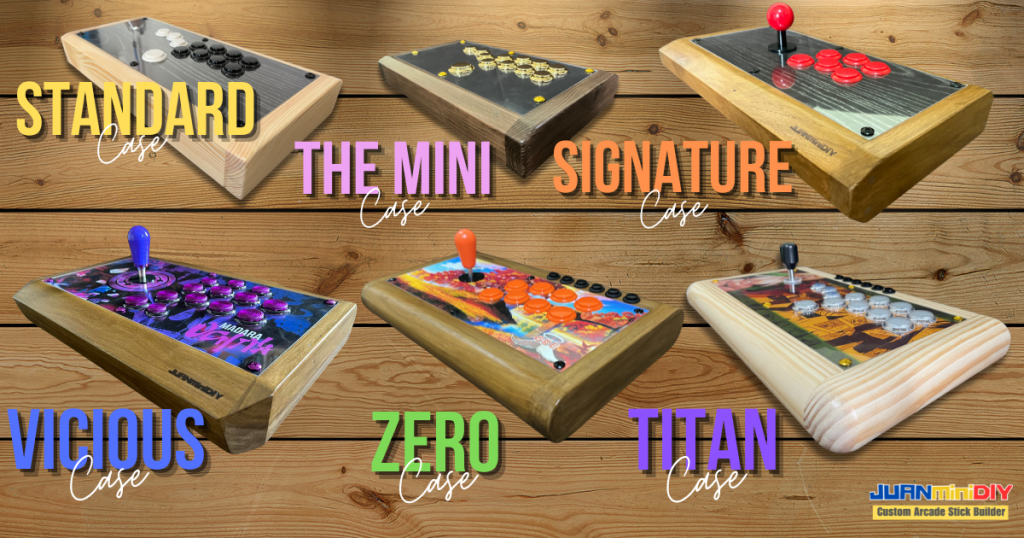Starting a woodworking business can be one of the most rewarding and fulfilling journeys you’ll ever embark on, especially when it’s focused on a niche as exciting as crafting custom wooden arcade sticks.
As someone who’s been down this path—building over 400 wooden fightsticks for gamers worldwide—I want to share what it takes to start a business like this.
From the initial tools to honing your craft, this guide is for anyone passionate about both woodworking and gaming.
Why Arcade Sticks?
You might be wondering, why focus on arcade sticks or controllers?
For me, the passion started early, back when I was a kid in the Philippines. I grew up playing arcade games with my siblings and friends during family trips to the mall.
That love for arcade gaming never left me, and when the pandemic hit, I decided to build my own arcade stick rather than buy one.
This small DIY project grew into a business, JUANminiDIY, where I’ve now created hundreds of fightsticks for gamers worldwide.
Wooden arcade sticks are more than just gaming tools—they’re functional pieces of art. Gamers love them for their aesthetics, durability, and that personal touch that mass-produced plastic sticks just can’t offer.
If you have a passion for gaming and a love for crafting, starting a business in this niche could be your next big move.
Finding Your Niche: Why Focus on Wooden Arcade Sticks?
One of the most important decisions when starting a woodworking business is identifying your niche—your specific corner of the market where you can stand out.
For me, the path to focusing on wooden arcade sticks felt like a natural fit, merging two passions: woodworking and arcade gaming.
But it wasn’t just about personal interest—there’s a solid business case for why focusing on custom arcade sticks, particularly wooden ones, can be a smart move.
The Unique Appeal of Wooden Arcade Sticks
Wooden arcade sticks offer something special that mass-produced plastic or metal sticks often can’t match—character, craftsmanship, and personality.
Each piece of wood has its own grain pattern, texture, and feel, making every custom stick unique.
For gamers who appreciate aesthetics and want something that stands out, wooden cases provide that handcrafted, high-end appeal.
When I started JUANminiDIY, I realized there weren’t many people offering custom wooden arcade sticks, even though there was a demand for them.
Most sticks on the market are built for function, but with wood, you can create a controller that’s not only functional but also a work of art.
This gave me a clear niche in a somewhat crowded gaming accessories market. Gamers who wanted more than just plastic casing could turn to me for something personal and beautiful.
Why the Fighting Game Community (FGC) is the Perfect Market
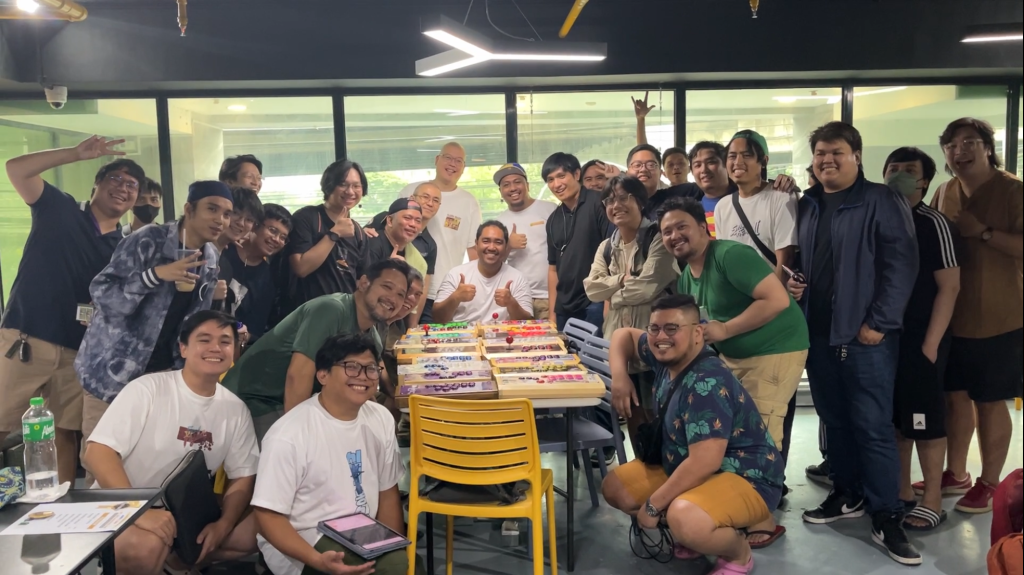
Another reason I focused on arcade sticks is because of the Fighting Game Community (FGC). This is a passionate, dedicated group of gamers who value precision, durability, and customization in their gaming gear.
Fighting games like Street Fighter, Tekken, and Guilty Gear demand quick reflexes and tight controls, and for many players, the right arcade stick can make all the difference in their performance.
The FGC has a long history with arcade sticks. From the early days of arcade gaming, when people would line up for matches at their local arcade, to modern tournaments held around the world, the arcade stick remains a symbol of competitive gaming.
By offering custom wooden sticks, I’m not just selling controllers—I’m offering a piece of gaming history that players can bring home.
Plus, the FGC is all about personal expression. Players often mod their arcade sticks with custom artwork, different buttons, and unique layouts to suit their style and personality.
This is where custom wooden arcade sticks shine—you’re not just giving them a controller, you’re giving them something they can truly make their own.
Standing Out in a Competitive Market

In any business, it’s important to stand out from the competition. By focusing on a specific niche like wooden arcade sticks, I’ve been able to carve out a space for myself in the larger gaming market.
While there are many companies producing mass-market controllers, very few are offering handmade, customizable, and personalized sticks crafted from premium wood.
The beauty of a niche business is that it allows you to be known for something specific. I’m not trying to compete with big brands like Razer or Hori, which mass-produce their products.
Instead, I’ve positioned JUANminiDIY as a boutique option for gamers who want something more unique and handcrafted. This focus has helped me build a loyal customer base of collectors, professional players, and casual gamers alike.
Balancing Functionality and Aesthetics
One of the key elements of success in this niche is balancing the functionality of the arcade stick with its aesthetics.
While the wood casing is beautiful, it also needs to perform well during competitive gameplay.
This is where I emphasize high-quality parts like Sanwa or JMD Oki buttons and precise layouts that match the needs of the player.
The wooden exterior is just the beginning—the true success of a custom arcade stick comes from how well it functions in the heat of battle.
Gamers who choose custom sticks want the best of both worlds: a controller that looks amazing and performs flawlessly.
By focusing on quality woodwork and collaborating with clients to ensure their stick feels right for them, I’ve been able to turn one-time customers into loyal fans.
The Power of Personalization
Another reason wooden arcade sticks are such a great niche is the endless potential for personalization. From the type of wood to the finish, button colors, artwork, and layouts, every detail can be customized.
In a world where gamers are constantly seeking ways to express their individuality, offering that level of customization sets you apart.
When a player gets a custom stick, they aren’t just buying a product—they’re investing in something that represents their gaming style, personality, and commitment to the FGC.
It’s not just a tool for playing; it’s a reflection of who they are as a gamer. And this is where the emotional value of custom wooden arcade sticks really comes into play.
A Growing Niche in a Global Market: Understanding Your Target Customers
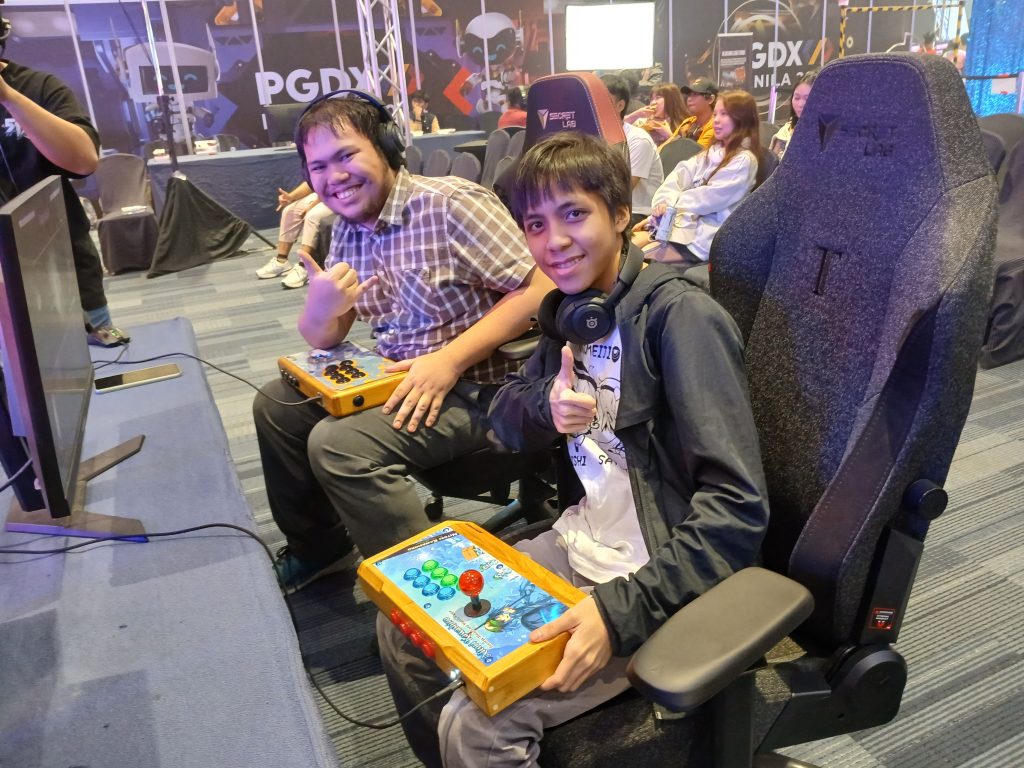
The arcade stick market has been growing steadily alongside the rise of esports and competitive gaming.
As tournaments gain more attention worldwide, players are becoming more serious about the gear they use.
While some will always opt for mass-produced options due to affordability or convenience, a growing segment of players are seeking something special—gear that reflects their dedication to the game and community.
This is where custom, handcrafted wooden arcade sticks shine. They cater to a niche of gamers who aren’t just looking for functionality; they want craftsmanship, personalization, and something they can proudly call their own.
This market includes several key groups that I’ve encountered over the years:
Fighting Game Enthusiasts
The fighting game community (FGC) is a passionate, tight-knit group of gamers who play titles like Street Fighter, Tekken, and Guilty Gear.
These players care deeply about the performance of their arcade sticks, demanding reliability, style, and comfort for those long gaming sessions.
For them, a custom stick isn’t just a tool; it’s an extension of their skills in the game. Offering personalized features, responsive buttons, and ergonomic designs can make a world of difference for this audience.
Collectors
Some clients aren’t looking for a stick to use in matches—they want a piece of art for their gaming collections. These customers value craftsmanship and aesthetics, often seeking out premium wood options or intricate custom designs. Their focus is on owning something unique, and they’re often willing to invest in high-quality materials that stand out both in functionality and appearance.
DIY Hobbyists
Then there are the DIY enthusiasts—people who want to build their own arcade sticks but may not have the tools or skills to work with wood. Offering customizable kits or pre-cut wooden cases can tap into this segment. I’ve found that this group appreciates modular options, clear instructions, and the ability to make the stick truly their own through assembly and customization. Providing detailed guides and tutorials can also help support their journey.
Where to Begin: The Tools of the Trade

When you’re starting out, one of the first things you’ll need to think about is your investment in tools.
Woodworking doesn’t have to break the bank, but there are certain essentials you can’t skip if you want to create quality arcade sticks.
First Tool Investments
1. Table Saw or Circular Saw
This will be your main tool for cutting wood into the panels that form the body of the arcade stick. A good table saw provides cleaner, straighter cuts.
2. Router and Router Bits
A router helps you carve out channels and recesses for buttons, the joystick, and other components. It’s an absolute must when crafting arcade sticks.
3. Drill Press
Essential for making precise, clean holes for buttons, especially if you’re working with 24mm and 30mm arcade buttons.
4. Clamps
Trust me, you’ll need these for gluing and holding your wood pieces in place while they dry.
5. Sandpaper & Power Sander
You’ll want your arcade sticks to be smooth to the touch. Sanding is a crucial step, especially when working with finer woods like narra or rosewood.
6. Wood Glue
Not just any glue! You’ll need a high-quality wood glue to ensure the durability of your builds.
7. Paint, Stain, and Varnish
Once your arcade stick is built, you’ll want to finish it with a stain or paint, depending on your design. Varnish helps protect the wood.
These tools form the backbone of your operations, but as you grow, you may want to expand your collection. Over time, I found myself upgrading to more precise equipment as orders came in and I started working with different types of wood.
Sourcing Materials and Managing Inventory
Where you source your materials can make or break your business. For wooden arcade sticks, the type of wood you use is crucial not only for aesthetics but also for functionality.
Here’s what I’ve learned:
Local Suppliers
Start with local suppliers for your wood. In the Philippines, I’m lucky enough to have access to quality pine, narra, acacia, rosewood, and yakal.
Pine is my go-to for budget-friendly builds because it’s light and easy to source, while narra and yakal offer a premium feel for higher-end sticks.
Hardware and Components
You’ll also need to source the buttons, joysticks, and PCBs (Printed Circuit Boards).
I recommend partnering with reliable suppliers like Arcade World UK or FocusAttack, but always have backups in case a supplier runs out of stock.
In my case, I even offer the JMD Pico Fighting Board and Brook Fighting Board for more customization and flexibility.
Managing Inventory
As you grow, managing your inventory becomes crucial. You don’t want to run out of a specific wood type or component when you have orders to fulfill.
I started by keeping small stockpiles of commonly used woods and components, but as orders increased, I began keeping an inventory spreadsheet to track everything. This ensures I’m not caught off guard when new orders come in.
Crafting the Perfect Product: Designing Custom Arcade Sticks
One of the things I’ve learned through crafting over 400 wooden arcade sticks is that every gamer has their own vision of what makes a stick perfect for them.
As someone who has always been passionate about both woodworking and gaming, I understand that designing the perfect custom arcade stick isn’t just about functionality—it’s about creating something that reflects the gamer’s personality, style, and unique needs.
For JUANminiDIY, offering custom designs has been one of the most rewarding aspects of the business, and here’s why.
Personalized Case Designs: Where Form Meets Function

When I started designing custom wooden arcade sticks, I quickly realized that one size does not fit all. Gamers have different preferences when it comes to button layouts, case shapes, and overall design.
That’s why offering personalized case designs became a key part of JUANminiDIY’s success.
The case is the first thing people notice about a stick. It’s the part of the arcade stick that has to not only feel great during gameplay but also look amazing sitting on a gaming setup.
For each custom stick, I work with the client to design a case that suits their style, whether they want something sleek and minimalist or bold and intricate.
Wood, with its natural grain and warm texture, offers a unique look and feel that plastic or metal simply can’t match. Each piece of wood tells its own story, making every custom stick one of a kind.
Beyond aesthetics, personalization also extends to the physical shape and size of the case. Some players prefer smaller, more portable cases, while others want a larger, heavier stick that sits firmly on their desk during heated gaming sessions.
Offering flexibility in design ensures that each arcade stick feels as good as it looks.
Balancing Aesthetics with Functionality
While the look of the stick is crucial, functionality is just as important. Every custom arcade stick needs to perform at the highest level, whether the player is at home casually gaming or competing in an intense tournament.
That’s why I place just as much emphasis on functionality as I do on aesthetics when designing each stick.
At JUANminiDIY, I make sure the button layout is tailored to the gamer’s preference. Some players opt for traditional joystick and button configurations, while others choose all-button layouts or WASD-type designs. The goal is to ensure that the stick feels intuitive to the player, making their inputs smooth and responsive.
I also focus on providing high-quality parts that gamers trust. Our JMD Oki buttons, for example, are a popular choice because they offer a soft, silent feel that’s similar to more expensive buttons like Gamerfinger, but at a more affordable price.
These details make a big difference when crafting the perfect arcade stick, as every element—down to the feel of the buttons—affects how well a player performs.
Custom Art and Finishes: Making It Truly Unique

One of the best parts of designing custom arcade sticks is working with clients to incorporate their personal taste into the artwork and finish of the stick.
Whether it’s designing a stick with their favorite game character, a sleek minimalist design, or something completely abstract, the artwork and finish can turn a regular controller into a personal masterpiece.
Many of my clients opt for custom art on their sticks, which can be easily swapped out to reflect their changing tastes or to celebrate a particular gaming event.
I also offer different wood finishes, from natural pine to stained brown or more exotic woods like narra or yakal, to give each stick its own distinct look.
With JUANminiDIY, it’s not just about slapping some artwork on a wooden case. It’s about working closely with the client to ensure every detail—from the button colors to the overall layout—reflects their vision.
The ability to personalize every aspect of the stick is what makes each product special, and it’s what keeps customers coming back for more.
Why Aesthetics Matter as Much as Functionality
In the world of gaming, a controller’s look can be just as important as how well it works. For a lot of players, especially in the Fighting Game Community (FGC), their arcade stick is a way to express themselves.
It’s not just a tool for playing games—it’s part of their gaming identity. That’s why aesthetics matter so much.
When you’re playing in a tournament or showing off your stick to friends, having a custom-designed arcade stick that stands out from the rest makes an impression.
For some players, it’s about creating a sleek, professional look, while for others, it’s about showing off bold colors or custom artwork that represents their favorite games or characters.
The beauty of crafting custom wooden arcade sticks is that you can balance aesthetics with top-tier functionality. The wood offers a natural warmth and character that can’t be replicated with plastic or metal.
When a player holds a handcrafted wooden stick, they can feel the craftsmanship and care that went into making it.
The Importance of Client Collaboration
One of the most rewarding aspects of designing custom arcade sticks is the collaboration with clients.
Every player has different needs and preferences, and part of the fun of this job is helping them bring their ideas to life.
Whether they want a specific layout, a unique wood type, or custom art that reflects their personality, I work closely with each client to ensure the final product exceeds their expectations.
At JUANminiDIY, I don’t just build arcade sticks—I build relationships with my customers.
Many of my clients are repeat customers, and that’s because I take the time to understand their preferences and make sure their arcade stick is exactly what they’re looking for.
This kind of personalization sets my business apart and creates lasting connections with gamers who appreciate craftsmanship and care.
Building a Customer Base and Marketing Your Woodworking Business
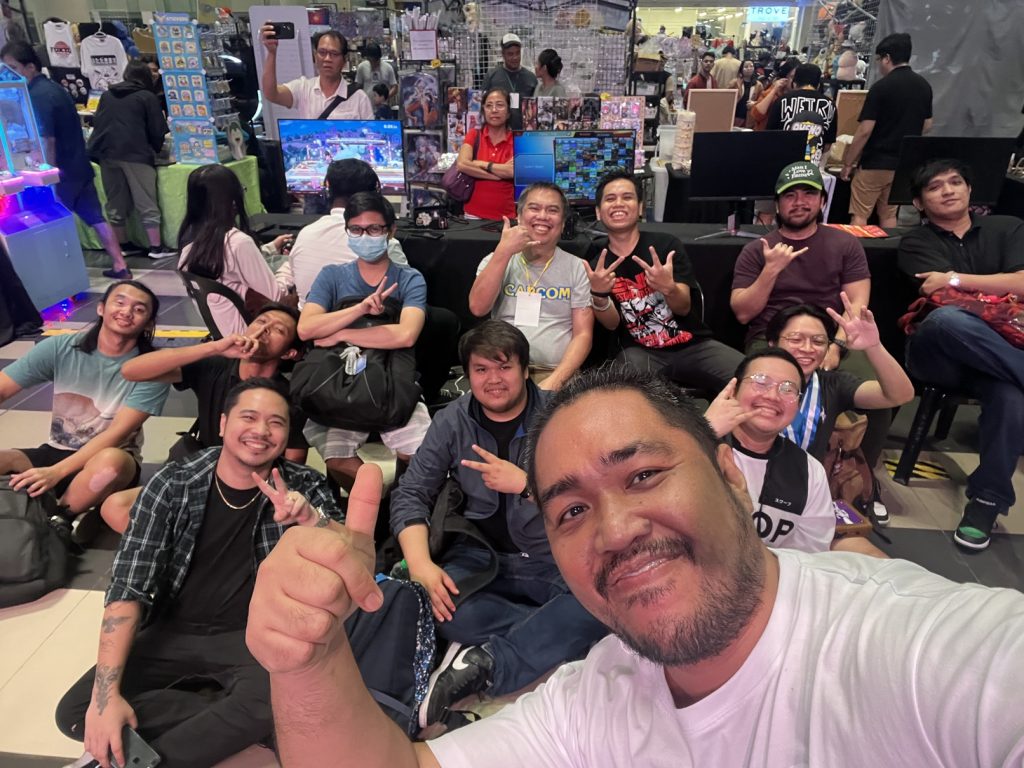
One of the biggest challenges when starting any business, including a niche woodworking business like crafting custom wooden arcade sticks, is building a customer base and getting your name out there.
For me, growing JUANminiDIY was all about finding the right audience and engaging with them in ways that felt authentic.
Word-of-mouth has been a huge part of my journey, but today, there are so many more ways to reach potential customers—especially through online marketing and social media.
In this section, I’ll share some tips that helped me grow JUANminiDIY and how you can build and market your own woodworking business.
Word-of-Mouth and Positive Reviews
At the start, word-of-mouth was the backbone of my business. I’m lucky to have built a reputation where clients appreciate the quality and care I put into each stick.
Word-of-mouth marketing works best when your product stands out, and in my case, crafting high-quality wooden arcade sticks that combine both aesthetics and performance helped drive positive reviews from happy customers.
Encouraging satisfied clients to leave reviews or share their experience with their friends can make a big impact.
Don’t be afraid to ask for testimonials or feedback—often, a simple message asking clients to share their thoughts can lead to great reviews that build credibility for your brand.
Online reviews, especially on platforms like Etsy, social media, or your website, are key for showing potential customers that you’re a trusted and skilled creator.
Engaging with Online Communities: The Power of the FGC and Reddit
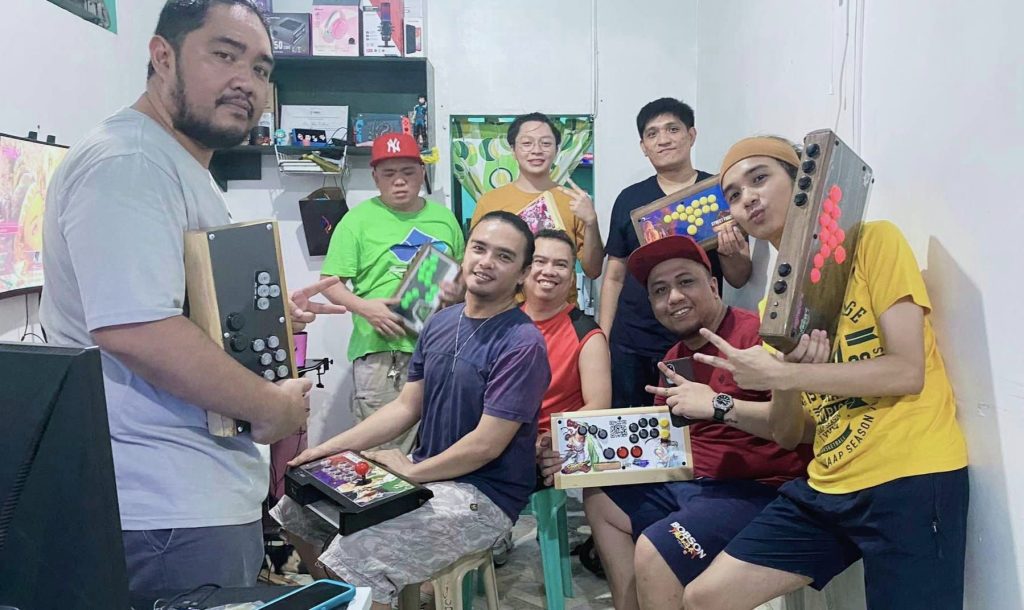
If you’re in a niche like custom arcade sticks, getting involved in online communities is a must.
For JUANminiDIY, the Fighting Game Community (FGC) has been a huge support. This community is passionate about fighting games and has a strong appreciation for custom gear like arcade sticks.
Being part of the FGC helps you stay connected to the latest trends, game releases, and events. It also gives you direct access to your target audience.
Whether it’s through sponsoring a tournament, attending events, or simply engaging with fellow gamers on forums and social media, building relationships within these communities can significantly boost your business.
Reddit, in particular, is a great place to connect with potential customers. Subreddits like r/fightsticks, r/fgc, and r/arcade are filled with enthusiasts who are often looking for advice or custom solutions.
I’ve found that being active in these communities, sharing my projects, and offering tips helps build credibility and drives interest in my products.
Using Social Media for Business Growth
Social media is one of the most powerful tools you have at your disposal when marketing a woodworking business, especially one that’s focused on a visually appealing product like custom wooden arcade sticks.
Platforms like Facebook, YouTube, Instagram, Pinterest, and TikTok allow you to show off your work to a wide audience.
At JUANminiDIY, I’ve found that posting high-quality images of my completed arcade sticks—showing off the craftsmanship and personalization that goes into each build—really resonates with potential customers.
People want to see what your product looks like, and they’re more likely to reach out when they can visualize themselves using something you’ve built.
Here are a few social media tips that have worked for me:
Facebook: Facebook groups for arcade gamers, DIY projects, or woodworking enthusiasts are a great place to share your work. You can also set up a business page to showcase your products and interact with potential customers.
Instagram: It’s all about visuals, so make sure you take high-quality photos or short videos of your products. Show different angles of your arcade sticks, close-ups of the wood grain, and highlight custom artwork or special features. Use hashtags like #arcadestick, #FGC, and #fightstick to reach a relevant audience.
YouTube: YouTube is a fantastic platform for longer-form content. You can showcase the entire process of crafting your arcade sticks—from design and woodworking to assembling and customization. It’s also a great space for tutorials, product showcases, or even behind-the-scenes videos. It allows viewers to see the craftsmanship involved in your work, building trust and a connection with your audience.
Make sure to engage with your followers. Respond to comments and questions quickly, and don’t be afraid to show a bit of your personality. People love to buy from creators they feel a connection with!
At JUANminiDIY, we primarily post on Facebook and YouTube to engage with our community. However, we are also exploring TikTok and Pinterest to reach a wider audience and connect with even more arcade stick enthusiasts.
SEO and Your Website: Reaching New Customers
Having a website that’s optimized for search engines is crucial for any business, especially if you’re looking to attract customers who are searching for products like yours.
At JUANminiDIY, my blog and website play an important role in bringing in new clients.
Search Engine Optimization (SEO) helps your website rank higher in search results, making it easier for potential customers to find you when they’re searching for things like “custom arcade sticks” or “wooden fightsticks.”
Here are a few SEO tips that have worked for me:
- Use Relevant Keywords: Research keywords that your potential customers are searching for. For example, terms like “best wooden arcade sticks,” “custom fightsticks,” or “handmade arcade controllers” could be what brings someone to your website.
- Write Blogs: Create blog posts that offer value to your audience. Sharing your expertise in building arcade sticks, offering tutorials, or explaining why wooden arcade sticks are unique are all topics that can attract readers (and potential customers) to your site.
- Optimize Product Pages: Make sure your product descriptions are detailed and include relevant keywords. Use clear and high-quality images, and make it easy for visitors to purchase or inquire about your products.
- Engage in Link Building: If you’ve written a great blog or have a well-known product, reach out to related websites or influencers in your niche and ask them to share or link to your work. Getting backlinks from other reputable sites can help boost your SEO.
Collaborating with Influencers and Streamers
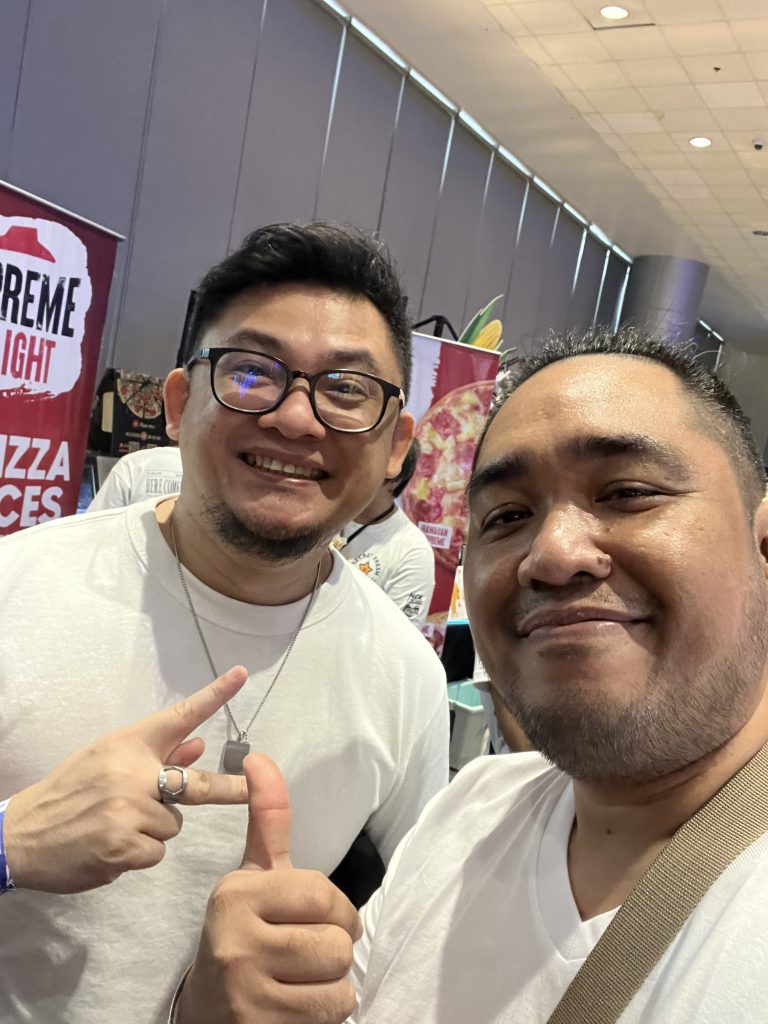
In today’s gaming world, many customers are influenced by streamers, YouTubers, and other content creators.
Collaborating with influencers can be a great way to showcase your product to a large, engaged audience. Look for streamers in the FGC who use custom fightsticks or content creators who review gaming gear.
Sending out one of your custom arcade sticks to a popular streamer or gaming influencer for review can expose your work to thousands of potential customers. It’s a great way to show off the craftsmanship and performance of your products while also generating buzz.
Hosting or Participating in Events
As I mentioned earlier, JUANminiDIY recently hosted the 1st JMD Master’s Cup SF6 Tournament.
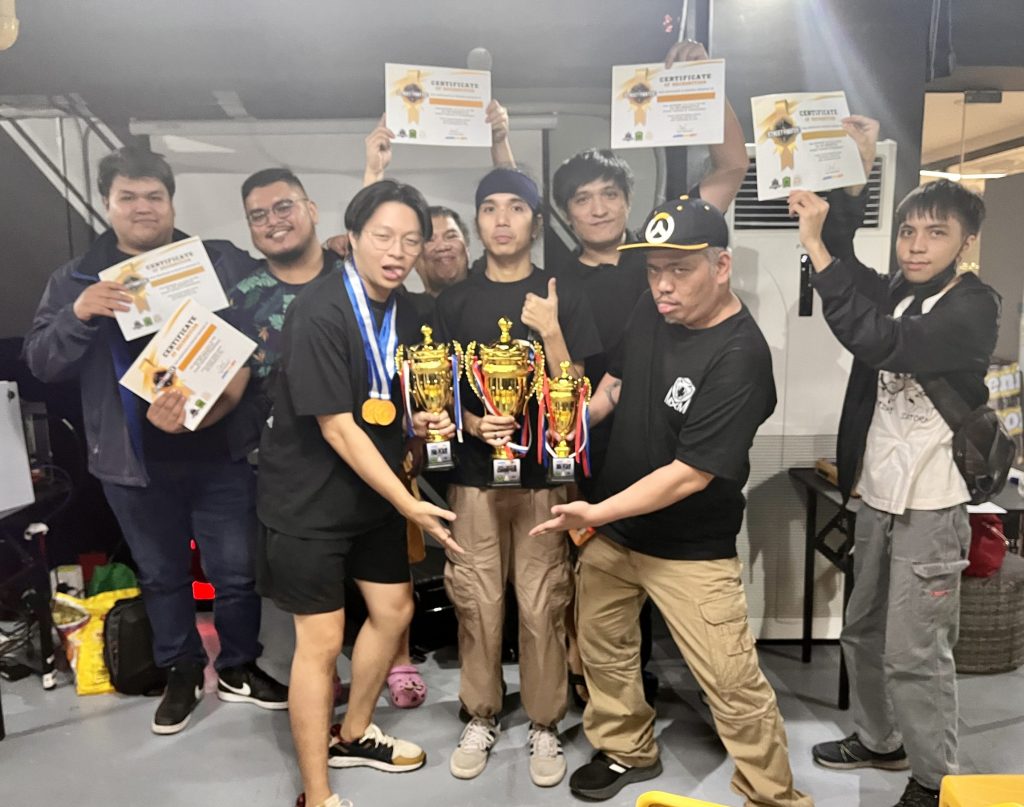
Events like these are a fantastic way to engage with the community, give back, and promote your products.
Whether you’re hosting your own event or participating in gaming tournaments or expos, it’s a great opportunity to showcase your work and meet potential clients face-to-face.
Even if hosting your own tournament isn’t feasible, consider sponsoring an event or providing prizes in exchange for some exposure. It’s a win-win situation that gets your name out there while supporting the gaming community.
Setting Realistic Expectations: The Challenges and Rewards of Starting Out
Starting a woodworking business—especially in a niche like custom wooden arcade sticks—comes with its fair share of challenges, but the rewards are just as significant.
When I first launched JUANminiDIY, I had to balance my love for crafting with the realities of running a business. It wasn’t always easy, but the journey has been incredibly fulfilling.
Here’s what you need to know about the hurdles and the emotional satisfaction that come with pursuing your passion.
Managing Time and Orders
One of the first challenges you’ll face is time management. As a solo creator, you’ll wear many hats—designer, builder, marketer, customer service rep, and more.
At the beginning, I often found myself working late into the night, trying to meet deadlines and make sure every arcade stick was crafted to perfection.
It’s essential to set realistic expectations for yourself and your clients. Communicating clear timelines upfront and sticking to a schedule can help you manage client expectations and avoid burnout.
I learned that saying “no” to certain projects or delaying orders to maintain quality is sometimes necessary.
Your time is valuable, and finding the right balance between taking orders and delivering quality products is crucial.
Learning New Skills
When you’re starting out, you’ll be learning new skills at every turn. Whether it’s mastering new woodworking techniques, understanding the intricacies of arcade stick designs, or figuring out how to market your business, the learning curve can be steep.
In the beginning, I was doing it all by myself. From crafting the arcade sticks to handling social media and marketing, it was a lot to juggle. I had no formal background in marketing, but I knew that if JUANminiDIY was going to succeed, I needed to get the word out.
Thankfully, over time, my wife joined me in this journey, and she’s been a huge help. Now, she handles the marketing, social media, blog writing, and content creation, which allows me to focus on my true passion—crafting arcade sticks. It’s been a game-changer for both the business and for me personally.
While it took time to develop those skills, the effort was worth it. Learning SEO, engaging on social media, and writing content took a lot of trial and error, but now, with my wife’s expertise, we’ve been able to refine our approach.
I always encourage new business owners to be open to learning and don’t hesitate to seek out resources or help from others in the community.
Balancing Passion with Business Realities
It’s easy to get caught up in the passion of woodworking and creating, but remember that you’re also running a business.
Financial planning, pricing your products correctly, and managing materials and supplies are crucial for keeping your business sustainable.
I faced this reality early on, especially with custom wooden arcade sticks, which can be labor-intensive. I had to make sure that my prices reflected the time and effort that went into each stick, while still offering something affordable for the community. .
It’s a balancing act—finding a price point that reflects your craftsmanship without undervaluing your work.
Shipping and Logistics: An Essential Part of the Business
Now, if you plan to ship your arcade sticks internationally, like I do, there’s another layer of complexity to consider: shipping and logistics.
This is something you’ll need to research thoroughly. Shipping costs, customs regulations, and packaging materials can eat into your profits if you’re not careful.
I learned this the hard way after shipping a couple of fightsticks overseas and realizing I hadn’t accounted for all the fees!
What I’ve found helpful is partnering with a reliable courier and getting to know the shipping process in detail.
Packaging your sticks properly, with enough padding to keep them safe during transit, is key. You’ll also want to factor in the cost of shipping materials and know the customs regulations for different countries.
It’s all about balancing your shipping strategy so that both you and your customers are happy with the results.
Getting the logistics right might feel overwhelming at first, but it’s just another part of running a business. And trust me, once you see your custom arcade sticks reaching gamers from different corners of the world, it makes all the hard work worth it.
Legal and Financial Considerations for Your Woodworking Business
Starting a woodworking business, like any other venture, comes with legal and financial responsibilities.
Here are a few key points you should consider before launching:
Register Your Business
Whether you’re operating out of a home workshop or a small storefront, it’s important to register your business with the appropriate government agencies.
Depending on where you are, this could mean registering as a sole proprietor, an LLC, or another business structure.
For me in the Philippines, I had to secure a DTI registration and BIR tax requirements.
Insurance
Accidents can happen in woodworking, both in your shop and with your products. Look into business insurance that covers product liability and workplace injuries. You want to be protected in case something goes wrong with a build or if an employee (or you) gets hurt.
Set Up Financial Systems
Separating your personal and business finances is key. I recommend opening a business bank account and using accounting software like QuickBooks or even Google Sheet. This helps you track income, expenses, and taxes more easily.
Taxes
Don’t forget taxes. As a small business owner, you’ll need to file both personal and business taxes, and you might have to collect sales tax from customers.
In the Philippines, for example, you’re required to file VAT or percentage tax returns regularly. Make sure to consult with an accountant who specializes in small businesses to ensure you’re compliant with all tax laws.
Emotional Satisfaction and Why It’s All Worth It
While there are plenty of hurdles to overcome, the rewards far outweigh the challenges.
The emotional satisfaction of turning a block of wood into a functional, beautiful piece of art is something I can’t fully describe.
When I see a client’s reaction to their custom arcade stick—whether it’s a collector or a gamer in a local tournament—it reminds me why I started JUANminiDIY in the first place.
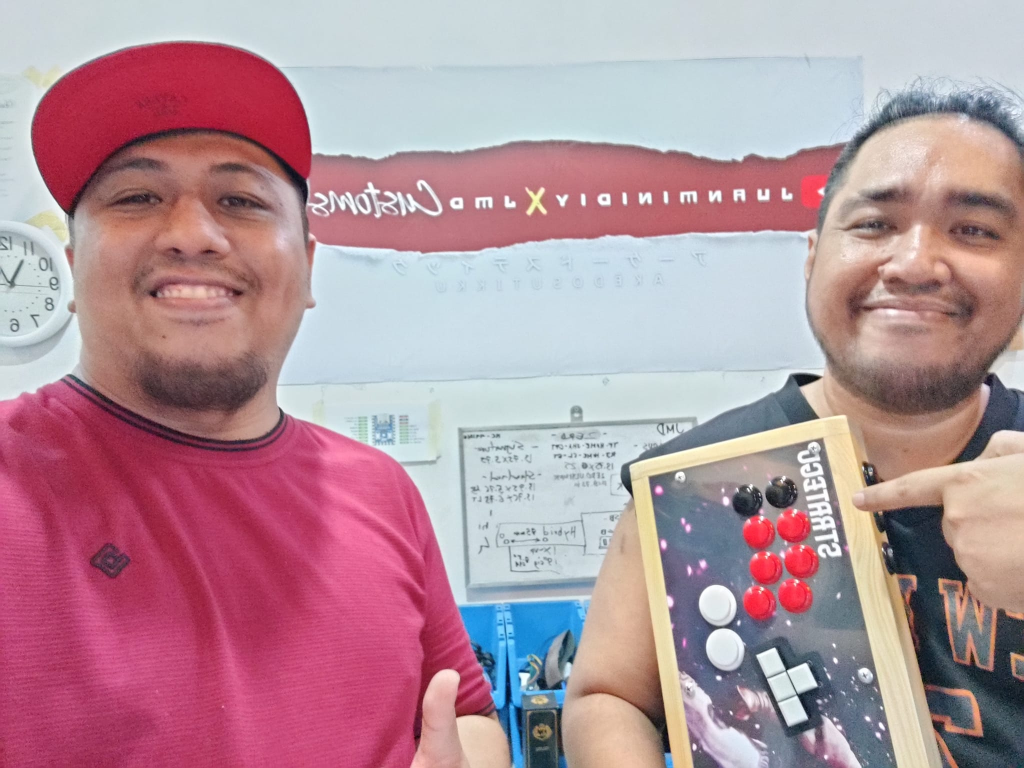
Every time I craft a new arcade stick, I’m reminded that I’m creating something that brings joy to others. Whether it’s for their love of retro gaming, their competitive edge in modern fighting games, or simply owning a unique piece of gear, I get to be part of that experience.
If you’re thinking of starting a woodworking business, know that it’s not just about making a profit. It’s about sharing your passion with others, building something with your hands, and contributing to a community that appreciates your craftsmanship.
Scaling and Growing Your Business
Once you’ve established a solid foundation for your woodworking business, it’s natural to think about scaling and growing.
I’ve found that, as demand for custom wooden arcade sticks grows, the challenge isn’t just crafting each stick but also managing orders, maintaining quality, and meeting deadlines.
Here are some strategies I’ve learned along the way that can help you scale your business without compromising your passion for craftsmanship.
1. Streamline Your Workflow and Automate Where Possible
One of the first steps to scaling is streamlining your workflow.
In my case, I started by refining my production process for creating arcade sticks—batching certain tasks, organizing my workspace more efficiently, and even investing in better tools that could speed up production without sacrificing quality.
As you grow, consider automating repetitive tasks. For example, setting up a clear online order form can reduce the back-and-forth with customers.
You can also automate some of your marketing efforts—automated email responses, social media scheduling, and online inventory systems can save you a lot of time.
2. Outsourcing Non-Core Tasks
When I first started, I did everything myself—from building the cases to responding to every inquiry.
But as demand increased, I had to start outsourcing non-core tasks. Think about areas where your time is best spent.
For me, the craftsmanship of arcade sticks is where my passion lies, so I outsourced things like bookkeeping, graphic design for custom art, and even some aspects of my social media marketing.
This allows you to focus on what you do best—creating your products—while still keeping the other parts of your business running smoothly.
3. Hiring Help for Production
As your business grows, you may find it impossible to keep up with production by yourself.
Hiring skilled workers or apprentices can help maintain quality while increasing output.
In the beginning, I was hesitant to bring others on board, but finding someone who shares your passion for woodworking or the gaming world can be a great way to lighten the load.
You can train them to follow your specific standards while helping your business scale.
If you want to keep things small and manageable, consider part-time help during busy periods or finding local freelancers who can assist on a project basis.
4. Expanding Your Product Line
Growth doesn’t always have to come from just increasing your order volume; sometimes, it’s about branching out into new products.
Once I established a name in the custom arcade stick market, I started thinking about what else my customers might need.
That’s when I introduced accessories like JMD Oki buttons and the JMD Pico Fighting Board. Offering additional products not only increased revenue but also gave my customers more reasons to return.
Think about complementary products in your niche. Maybe you could design custom controllers, DIY kits, or even custom furniture for gamers. Diversifying your offerings can open up new revenue streams and allow you to serve different segments of your target market.
5. Managing Quality and Consistency
One challenge that comes with growth is maintaining the quality that made your products stand out in the first place. This was something I was very conscious of as orders started rolling in.
The key to scaling successfully is ensuring that your attention to detail and craftsmanship remains intact, even as you produce more.
Consider implementing a quality control process—whether that’s checking each product yourself or training a trusted team member to do so.
Your reputation hinges on delivering the same level of excellence, whether you’re making one arcade stick a week or ten.
6. Building Long-Term Relationships with Customers
Another way to scale your business is by focusing on customer retention rather than just acquisition.
Many of my clients are repeat customers, and that’s because I’ve worked hard to build strong relationships.
Whether it’s offering personalized service, remembering their preferences, or creating products they can’t find anywhere else, keeping customers engaged is essential for long-term growth.
Consider loyalty programs, offering discounts for repeat customers, or introducing exclusive pre-order options for your most loyal fans.
These small touches can go a long way in growing your business sustainably.
7. Scaling Smart: Know When to Say No
Finally, as exciting as growth can be, it’s important to scale at a pace that works for you.
I’ve had to turn down orders when I felt they would compromise my quality or overload my schedule.
Scaling too quickly can lead to burnout or losing the craftsmanship that made your business successful in the first place.
Make sure to set boundaries, both for yourself and your business. It’s okay to grow slower if it means maintaining your passion and quality.
Giving Back to the FGC: Why It Matters
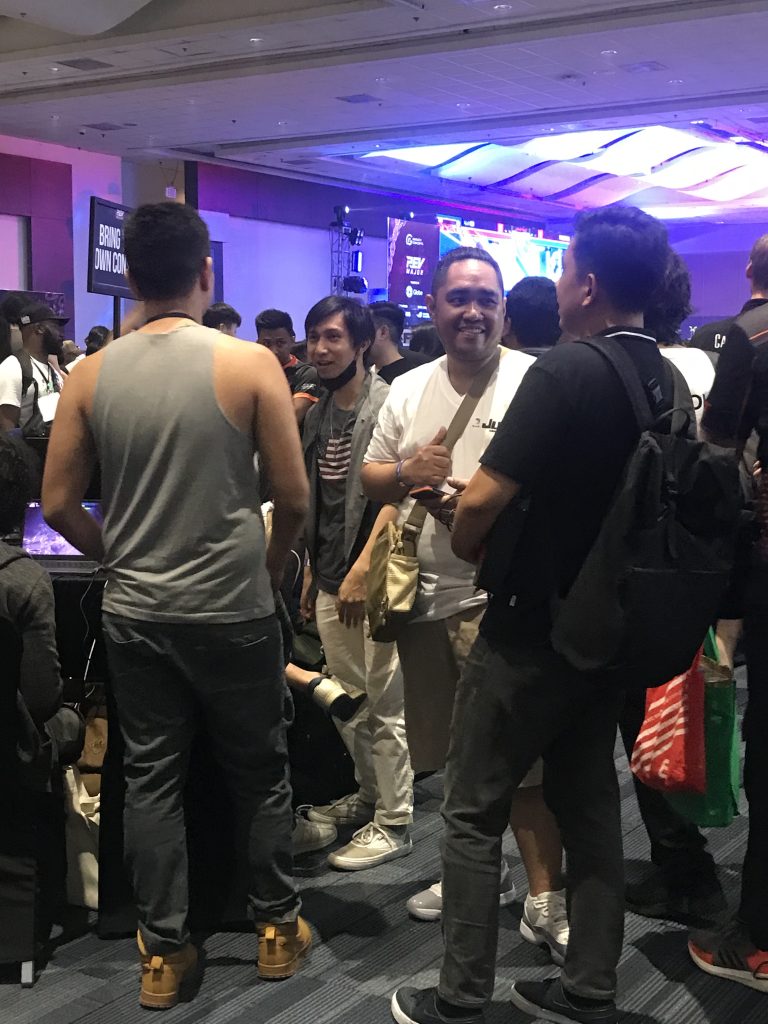
One of the most rewarding parts of running JUANminiDIY has been the opportunity to give back to the community that has supported me from the very beginning—the fighting game community (FGC).
Recently, we hosted our 1st JMD Master’s Cup SF6 Tournament, and I can’t express how fulfilling it was to see the event come together.
It wasn’t just about the competition—it was about creating a space for local players to come together, showcase their skills, and enjoy the games they love.
Hosting events like this is an essential way to give back to the FGC, and I believe that if you’re going to start a business in a niche community, finding ways to support and nurture that community is key.
Why Supporting the FGC is Important
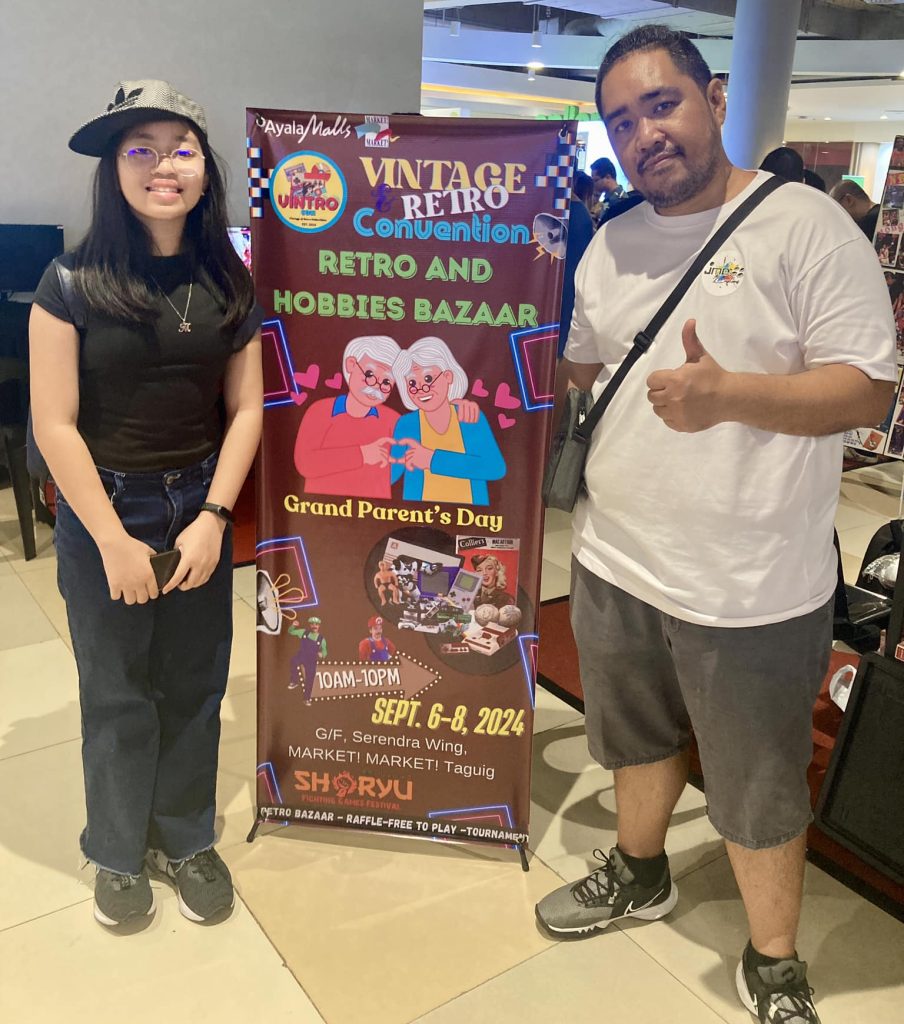
The FGC isn’t just a group of gamers—it’s a tight-knit community that thrives on passion, camaraderie, and competition.
Over the years, I’ve seen how players support each other, from sharing tips to organizing local meetups. It’s a scene where friendships are formed and rivalries are born, all through a shared love for fighting games.
As a business owner who has benefited from this community, I feel a responsibility to give back in any way I can. Here’s why it’s important:
1. Building Stronger Relationships
When you support the FGC, you’re not just building a customer base—you’re fostering relationships. Hosting tournaments, sponsoring local events, or even just showing up at local gatherings builds trust and loyalty with your audience.
After all, people remember who was there supporting them during both the highs and lows of their gaming journey.
2. Growing the Local Scene
Local tournaments, like the JMD Master’s Cup, help grow the scene by giving players a platform to hone their skills.
It’s easy to forget that many of today’s top players started out at small, local events. By organizing tournaments, you’re giving the next generation of players a chance to shine.
For us, this tournament was an exciting opportunity to give local players a chance to compete in Street Fighter 6 and connect with fellow enthusiasts.
3. Supporting Diversity in Gaming
The FGC is known for its diversity, welcoming players from all backgrounds, nationalities, and skill levels.
By contributing to this community, you’re helping to create an inclusive environment where everyone feels like they belong.
For me, organizing tournaments is about more than just the competition—it’s about creating a space where everyone feels welcome and included.
4. Increasing Visibility for Your Brand
Let’s not forget that giving back to the FGC is also a great way to increase visibility for your brand. Tournaments and local events are the perfect opportunities to showcase your products and services.
When we hosted the JMD Master’s Cup, it wasn’t just about the competition—it was also a chance to let local players experience our custom wooden arcade sticks firsthand.
Word-of-mouth in the FGC spreads fast, and being an active contributor to the scene can do wonders for your brand’s reputation.
Ways to Give Back to the FGC
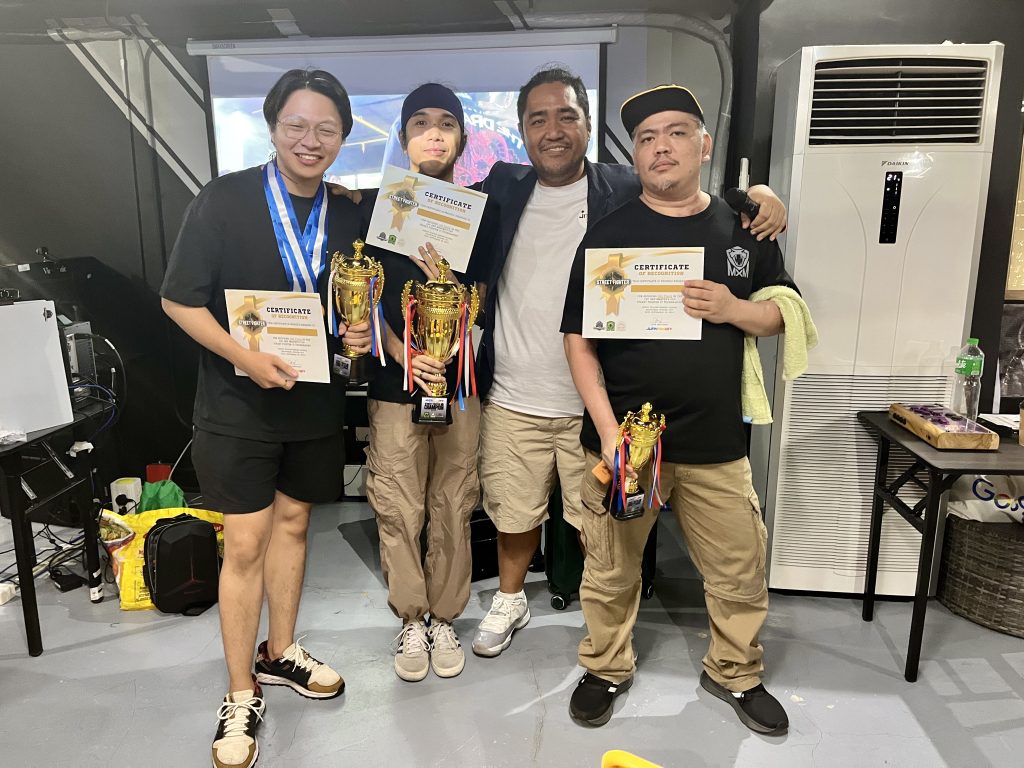
You don’t need to start with a major tournament to make an impact in the FGC. There are plenty of ways to contribute, even if you’re just starting out:
Host Local Tournaments
Start small by hosting local meetups or online tournaments. Even a casual get-together can have a big impact on your local scene.
As you grow, you can scale these events up, just like we did with the JMD Master’s Cup.
Sponsor Players or Events
Consider sponsoring a player or a local event. This not only helps grow the community but also provides exposure for your business.
Many players would appreciate the support, especially when traveling to larger tournaments.
Collaborate with Content Creators
Partnering with FGC content creators—whether they’re streamers, YouTubers, or podcasters—is another great way to give back.
Collaborations can bring attention to both the community and your products, while also providing creators with valuable content for their audience.
Donate or Offer Prizes
If hosting an event isn’t feasible yet, consider donating custom arcade sticks or components as prizes for local tournaments.
I’ve donated fightsticks to small community events, and it’s always been a great way to contribute to the scene while showcasing our work.
The Bigger Picture: Why It’s Worth It
In the long run, giving back to the FGC is about more than just business. It’s about supporting a community that thrives on passion and competition.
By investing in that community, you’re ensuring that it continues to grow and evolve, creating opportunities for more players, and keeping the love for fighting games alive.
For me, hosting the JMD Master’s Cup SF6 Tournament was a dream come true.
Seeing the joy on the faces of the players, the energy in the room, and the sense of community made it all worth it.
It’s not just about selling arcade sticks—it’s about being a part of something bigger and helping the community that has given so much to me.
Customer Success Stories: Testimonials and Feedback
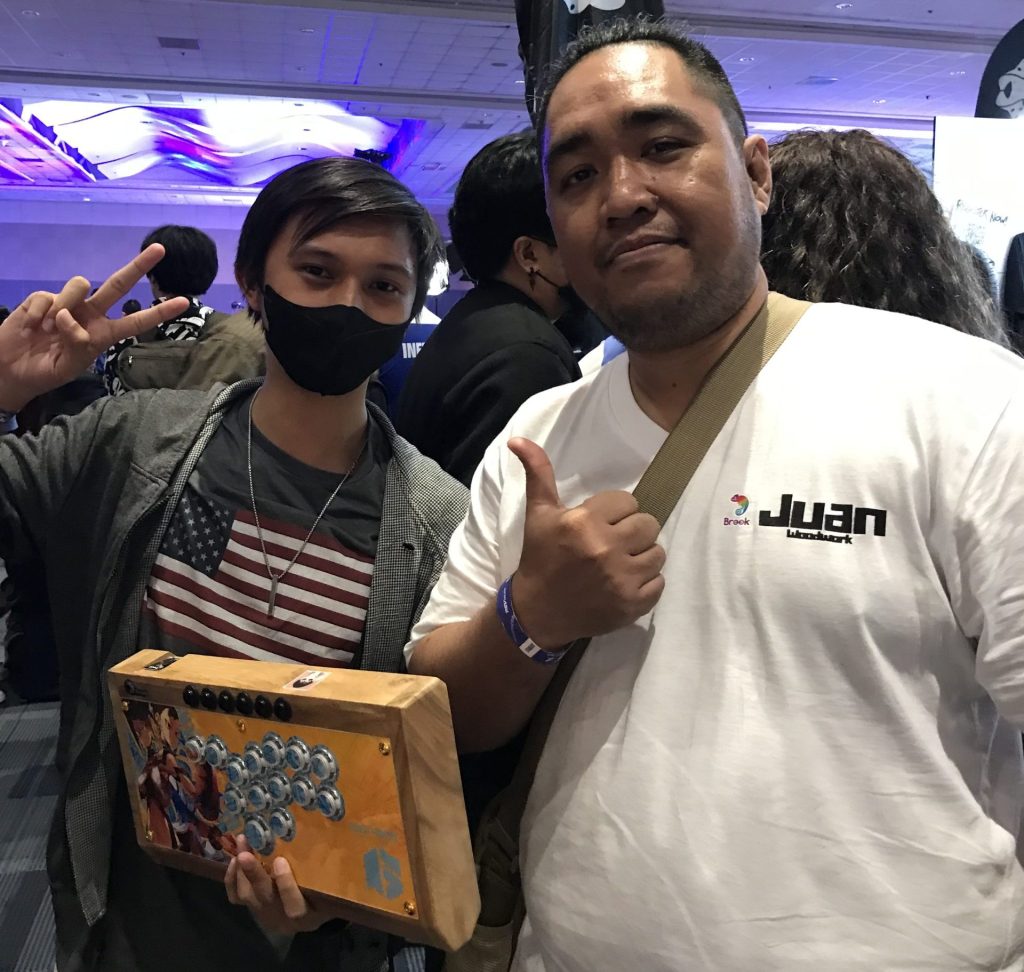
One of the most rewarding aspects of running JUANminiDIY is hearing from satisfied customers.
Over the years, I’ve had the privilege of working with gamers, collectors, and enthusiasts from all over the world, and their feedback has always motivated me to continue improving my craft.
I firmly believe that customer success stories are the heart of any business—they offer proof of your product’s quality and the impact it has on people’s lives.
Here are a few testimonials from clients who have shared their experiences with their custom arcade sticks:
“Amazing Craftmanship”
Very accommodating and easy to talk to, with great customer service. The products are very well made with amazing craftsmanship. Highly recommended. – David Neil
“Very Accommodating and Friendly”
This is my first time ordering a custom wooden mixbox controller and I’m thrilled to have ordered from this shop. The build for this mixbox is really good and well-made, everything feels neat. I was also met with a very accommodating and friendly customer service that answered all my inquiries. Would order again 11/10. – Mango Kyun
“Exceeded All My Expectations”
Ordered my first fight stick from here, and it exceeded all my expectations! Beautiful aesthetic and perfect functionality. Also, seller is very responsive, easy to talk to, and helped with many of my requests and questions! 10/10 – Miguel Agcaoili
Read more JMD customer reviews here.
These kinds of stories remind me of why I started JUANminiDIY. Each stick I make is unique, designed with the individual customer in mind.
Whether it’s the feel of the wood, the customization options, or the functionality of the buttons, knowing that my products are making a difference in people’s gaming lives gives me a sense of pride and fulfillment.
I encourage new business owners to gather testimonials and feedback from their customers. Not only does it provide valuable social proof, but it also offers insight into how you can continue improving your products and services.
Sharing customer success stories builds trust and showcases the real-world impact of your products. It’s one thing to talk about the quality of your work; it’s another to have happy customers vouch for it.
Conclusion: Turning Your Passion Into a Business
Starting a woodworking business, especially one as niche as creating custom wooden arcade sticks, is truly a journey fueled by passion.
If there’s one thing I’ve learned through my own experience with JUANminiDIY, it’s that turning something you love into a successful venture is not only possible but also incredibly rewarding.
Crafting over 400 arcade sticks for gamers around the world has shown me that if you’re committed to quality, creativity, and building relationships with your community, your passion can indeed become a profitable business.
But let me be real with you: it takes patience, resilience, and a lot of hard work. There will be challenges—whether it’s perfecting your woodworking skills, finding reliable suppliers, or learning the ropes of marketing. The key is to keep pushing forward, learning as you go, and embracing the process.
One of the most fulfilling aspects of this journey has been connecting with fellow gamers and contributing to the FGC.
Seeing my fightsticks in the hands of passionate players and being part of events like the JMD Master’s Cup makes all the effort worth it. It’s a reminder that when you start a business based on your passion, you’re not just selling products—you’re contributing to a community.
If you’re passionate about woodworking, gaming, or any other niche, don’t hesitate to take that first step.
Build your skills, find your unique angle, and most importantly, stay true to what you love. With dedication and a clear vision, you can turn your passion into a thriving business—just like I did.
Keep creating, keep crafting, and most of all, enjoy the ride.
Thanks for reading!
Stay Connected
Be sure to sign up for our email newsletter to stay in the loop with the latest articles, promos, and more.

